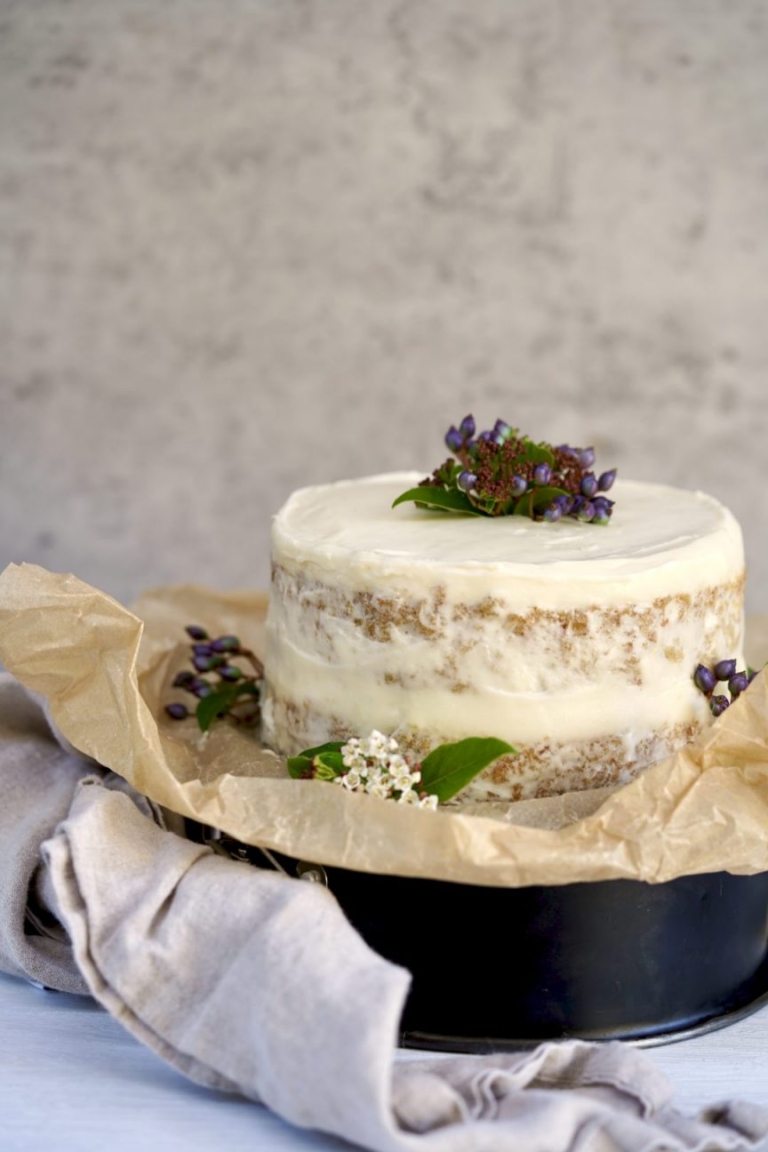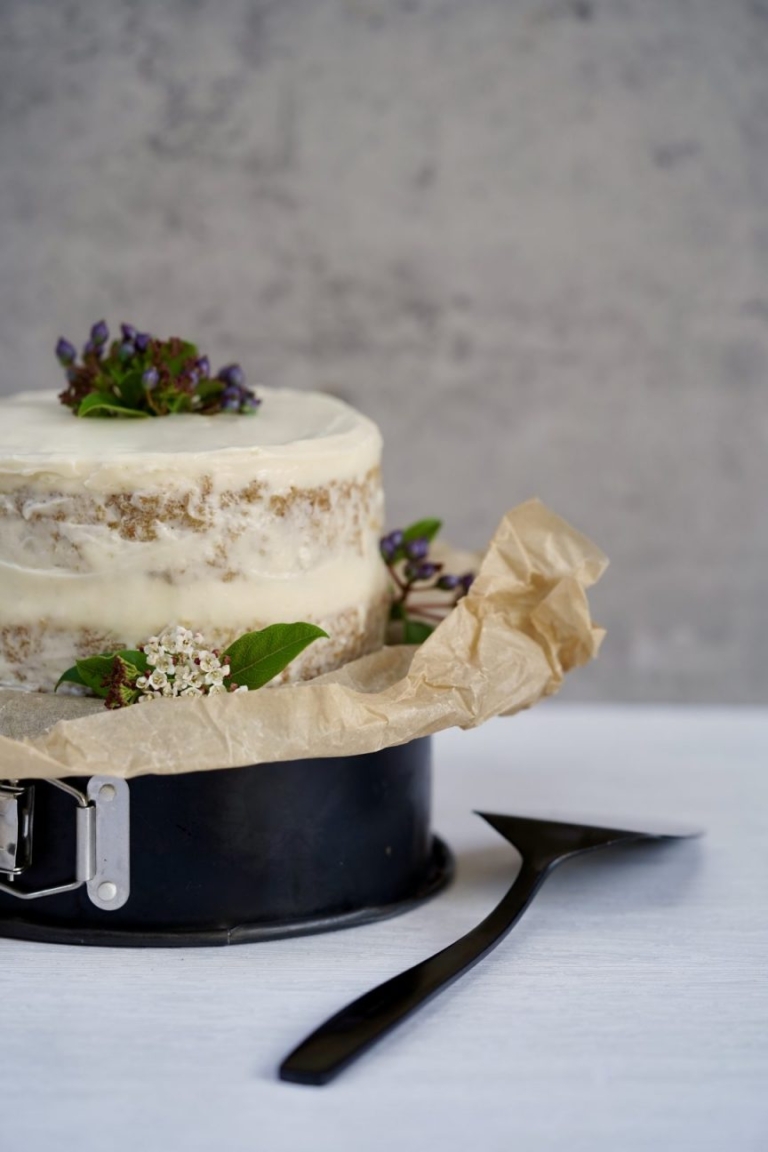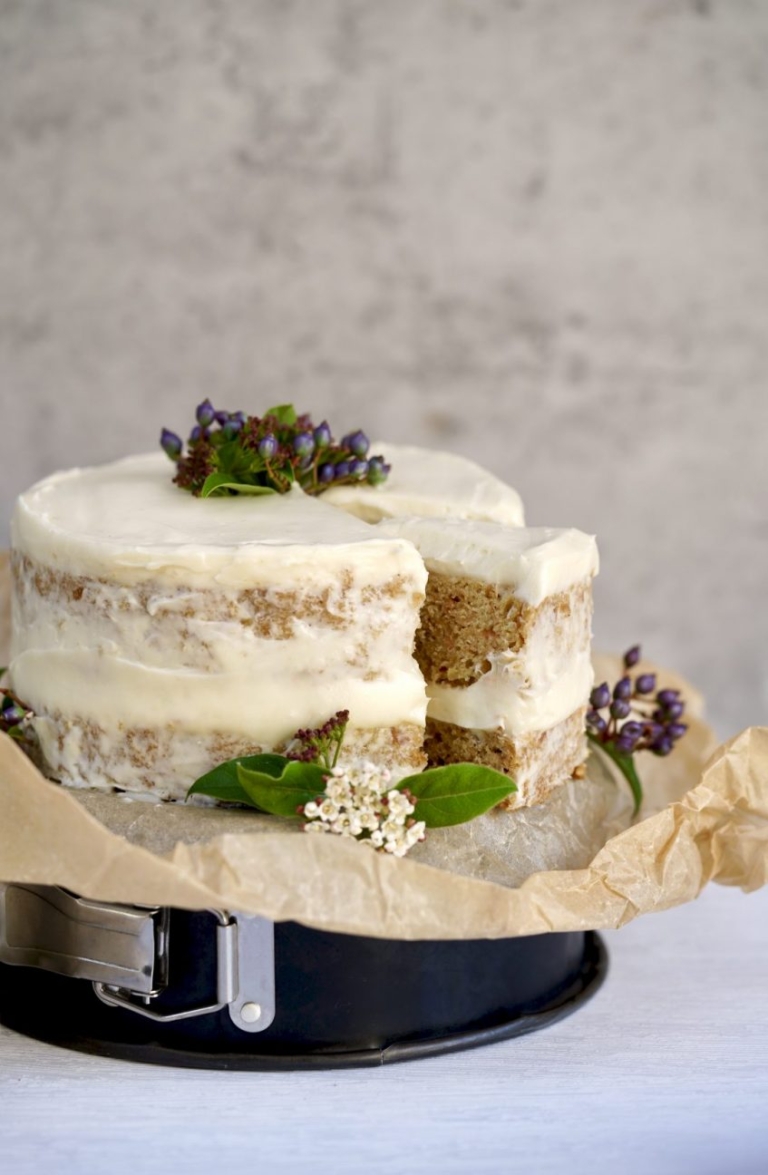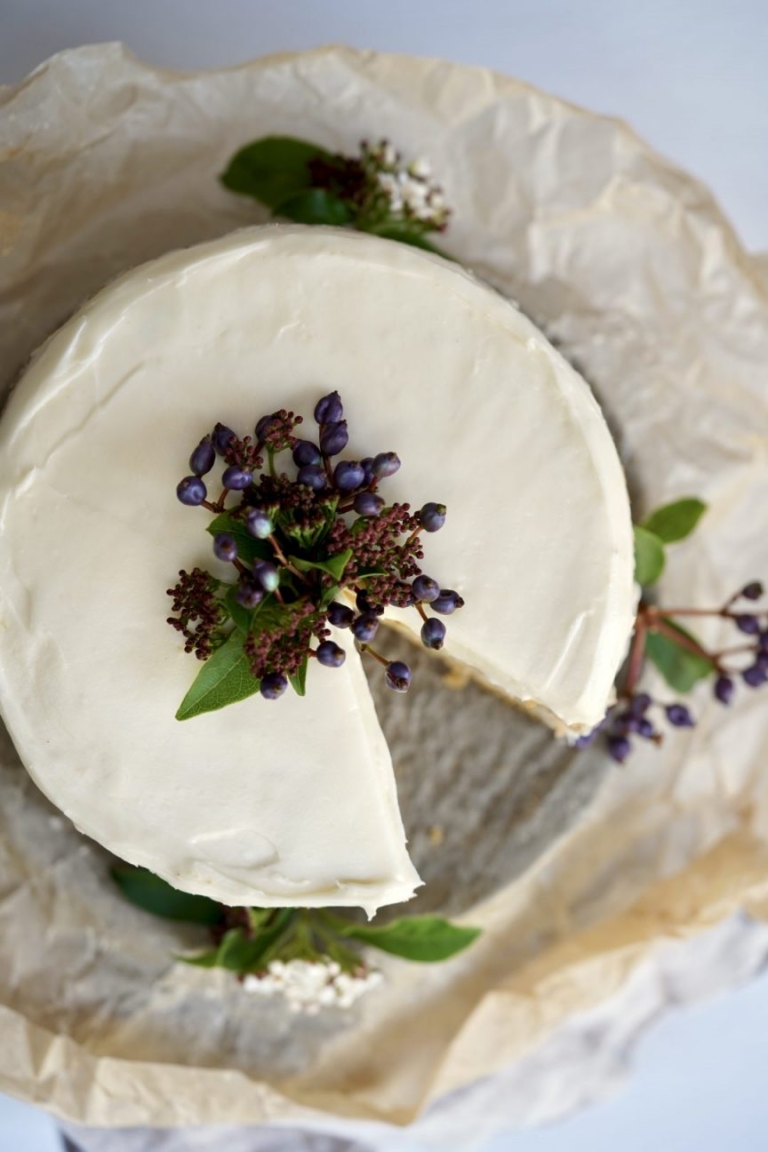Apple And Olive Oil Semi-Naked Cake With Maple Frosting
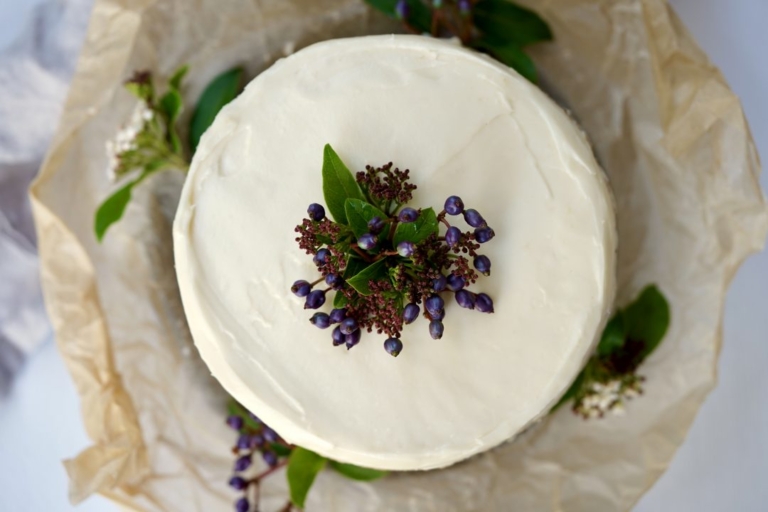
A quintessential autumn dessert; an apple and olive oil semi-naked cake with creamy maple frosting. This is a new fall favorite I recently developed and I’ll be making this throughout the season. This lovely cake highlights seasonal flavors we’ve all come to adore: apples, cinnamon, and maple. The twist is Extra Virgin olive oil, which makes this cake rich in flavor with moist layers. Topped with a simple semi-naked frosting, almost anyone can master, this cake is the cake of the season.
What Are Naked Cakes
There are two types of naked cakes. This apple and olive oil cake is cake is a “semi-naked“, cake, also known as a “nearly-nude“, or “half-dressed” cake. A semi-naked cake has a minimal amount of frosting around the sides. In culinary terms, this means a semi-naked cake is a crumb-coated cake. A “crumb coat” is a thin layer of frosting that bakers apply to a layer of cake before the final frosting. The crumb coat keeps stray crumbs from coming loose during the decorating process. In contrast, a “naked cake” is a cake where the sides of the cake are completely bare of any frosting. And that’s why it’s “naked” because the crumbs are exposed.
The History of Naked Cakes
Naked cakes are everywhere after exploding onto the culinary scene in 2014. Christina Tosi, the chef, founder, and owner of Milk Bar, began selling naked cakes for $400 apiece. Tosi believed that the most exciting, texturally, interesting parts of the cake were the layers-and she didn’t understand why bakers chose to hide them.
The biggest complaint about naked cakes is dryness. Without frosting to seal in the moisture, cake layers can often dry out too quickly. But this apple cake is different, the addition of olive oil in this cake makes the frosting, less essential. A semi-naked style cake is also less likely to dry out, compared to a fully naked cake, since there is a little bit of frosting holding in the moisture. Some critics say this style of cake appears “unfinished“, but I disagree and welcome their simplicity.
Baking With Olive Oil
Olive oil is the secret ingredient in my apple cake and what creates moist, tender, flavorful layers. What many home bakers don’t know, is that olive oil can be used in place of many traditional cooking oils. You can easily swap out the same amount of vegetable or canola oil for Extra Virgin olive oil without issue. In terms of the best Extra Virgin olive oil to use, you want a mild, buttery olive oil with low bitterness and fruity notes.
You can also use mild olive oil instead of butter in most baking recipes. Typically this works best if the recipe calls for melted butter. For baked goods, one should just use slightly less olive oil than better. Meaning, that three parts olive oil to four parts butter is the general rule of thumb. In cake baking, butter can be aerated with sugar to create air bubbles which gives the cake lift. Olive oil does not do that. Instead, the lift comes from leavening agents (baking powder and baking soda) and whipped egg whites, as is the case in this recipe. Another olive oil-based cake I adore is one I make in cupcake and cake form often.
If you’re not yet a naked cake fan, I urge you to reconsider. There are several advantages to it. For starters, this playful style has a rustic vibe that works well with casual gatherings. And, perhaps the best part, a naked cake prevents you from having a frosting disaster which, let’s be honest, we have all had at one point or another.
The truth is, sometimes simplicity is the easiest. And I know it may be a bit of a stretch to say it, but perhaps a naked cake is even a little healthier. I made this cake on the less sweet side generally, but less frosting will also lower the overall sweetness of the cake as a whole. So, the takeaway, is if you’re the type who prefers the cake layers a little more than the sugary frosting (such as my husband), you’ve just found your ideal go-to cake.
Apple And Olive Oil Semi-Naked Cake With Maple Frosting
Ingredients:
For the Apple Cake:
- 2 1/4 cups all-purpose flour
- 1/2 teaspoon cinnamon
- Dash of salt
- 1 1/4 teaspoons baking soda
- 1/2 teaspoon baking powder
- 1/2 cup good quality Extra Virgin olive oil
- 3/4 cup sugar
- 1 teaspoon vanilla extract
- 2 eggs
- 2 medium Granny Smith apples, peeled and grated
- 1 medium Honey Crisp apple, peeled and grated
- 2 egg whites
For the Maple Frosting:
- 8 ounces cream cheese, softened
- 7 tablespoons unsalted butter, softened
- 3 tablespoons good quality maple syrup
- 1 cup Confectioners' sugar
Directions:
- Lightly grease an 8-inch springform pan, line with parchment paper, and lightly grease the parchment. Set aside Preheat the oven to 325 degrees F.
- In a small mixing bowl all the flour, cinnamon, salt, baking powder, and baking soda, mix well to blend. Set it near your workstation. ;;In the bowl of a kitchen mixer, such as a KitchenAid, fitted with a paddle attachment, add the olive oil, sugar, and vanilla, and mix to blend. Add the eggs one at a time, and mix, until blended, scraping down the sides as needed with a rubber spatula.
- Use your hands to gently squeeze out any excess liquid from the grated apple. Add to the egg mixture and blend. With the mixer on low, add the flour mixture. Pour the cake batter into a medium mixing bowl and set aside.
- Clean the mixer bowl and attach the whisk attachment. Add the egg whites and beat high till soft peaks form. Use a large rubber tip spatula to gently fold in the whipped egg whites being careful not to over-mix.
- Pour the batter into the prepared baking pan. Flatten the top as best as possible. Place the cake in the oven and bake for about 45-50 minutes or until set and a cake tester inserted into the middle comes out clean. Allow the cake to cool completely. In the meantime, make the frosting.
- For the frosting, clean the mixing bowl again and attach the paddle attachment, Add the cream cheese and butter and beat on high to blend. Scrape down the sides and add the maple syrup, beat on medium-high to incorporate. With the mixer on low, slowly add the confectioners' sugar and whip till smooth and blend. Refrigerate the frosting until the cake has cooled.
- To Frost the Cake: Place the cooled cake on a cutting board. Using a large serrated knife, trim the cake tops, bottom, and sides. Next, slice the cake in half lengthwise into two equal layers. Gently, set one cake layer to the side. Place the bottom layer on a serving platter. Spread a generous amount of frosting on top of the first layer. Using an off-set spatula, smooth out the frosting going slightly over the edge. Top with second cake layer and evenly cover the top with another generous amount of frosting and bread evenly around. Spread the remaining frosting all around the sides using the offset spatula or an icing spatula.
- Refrigerate the cake to set the frosting for at least 30 minutes before serving.

